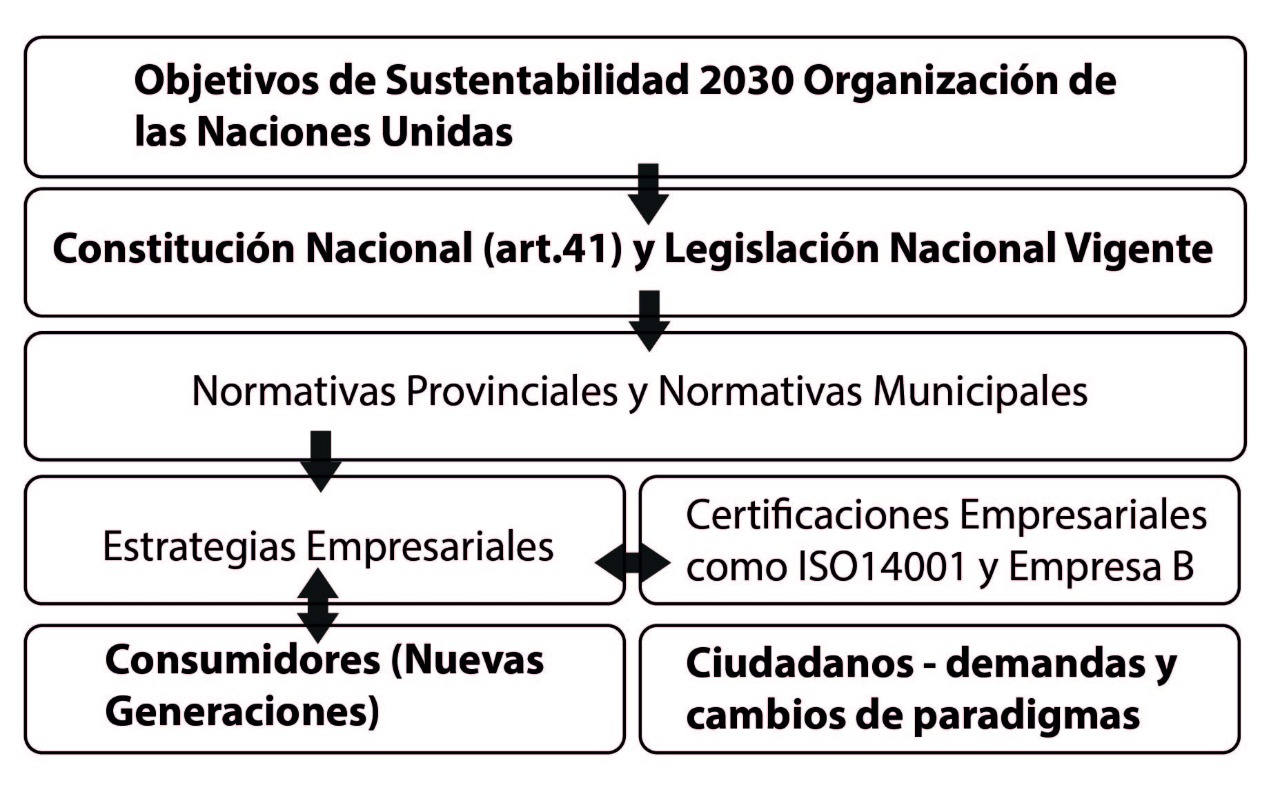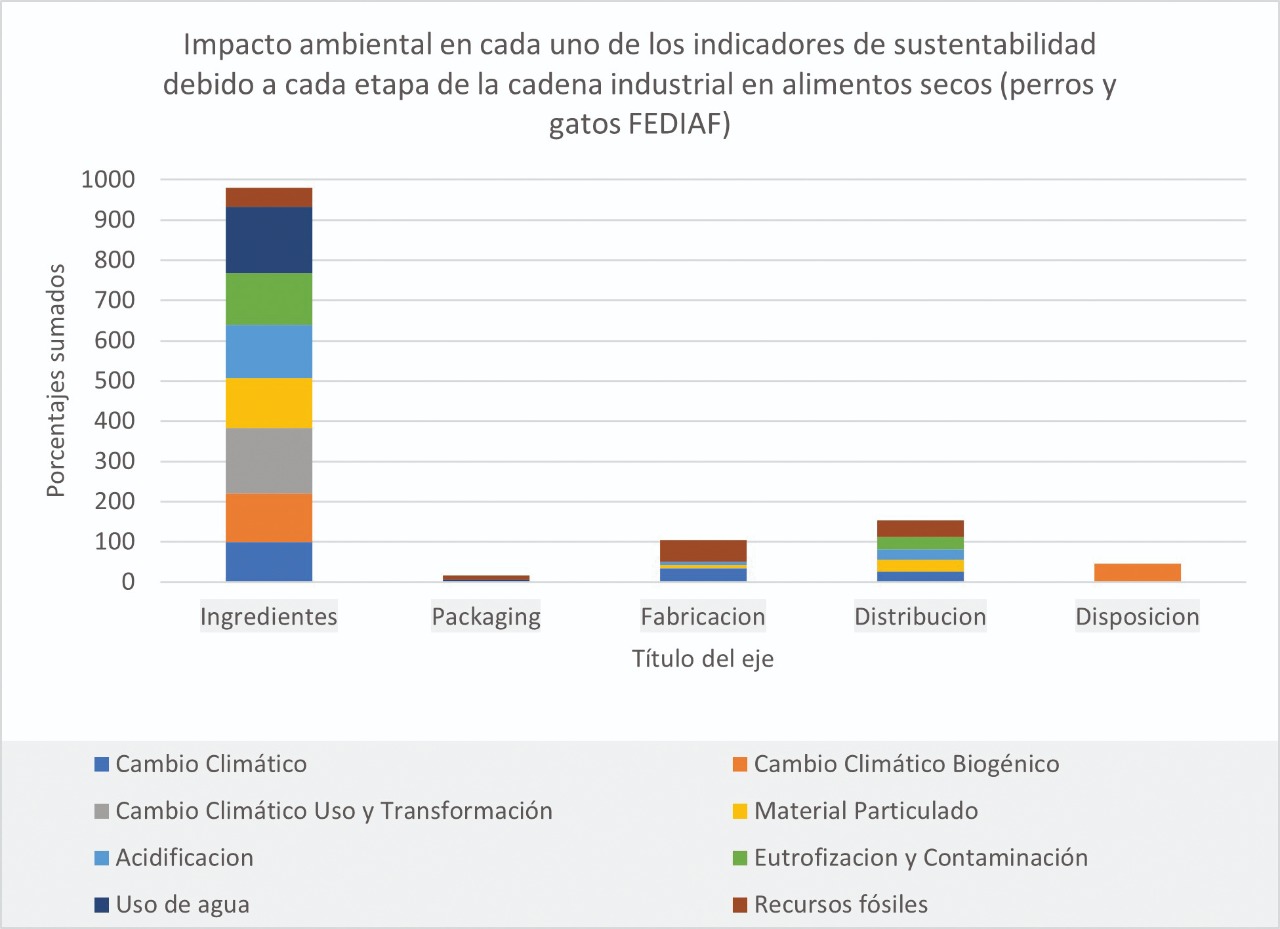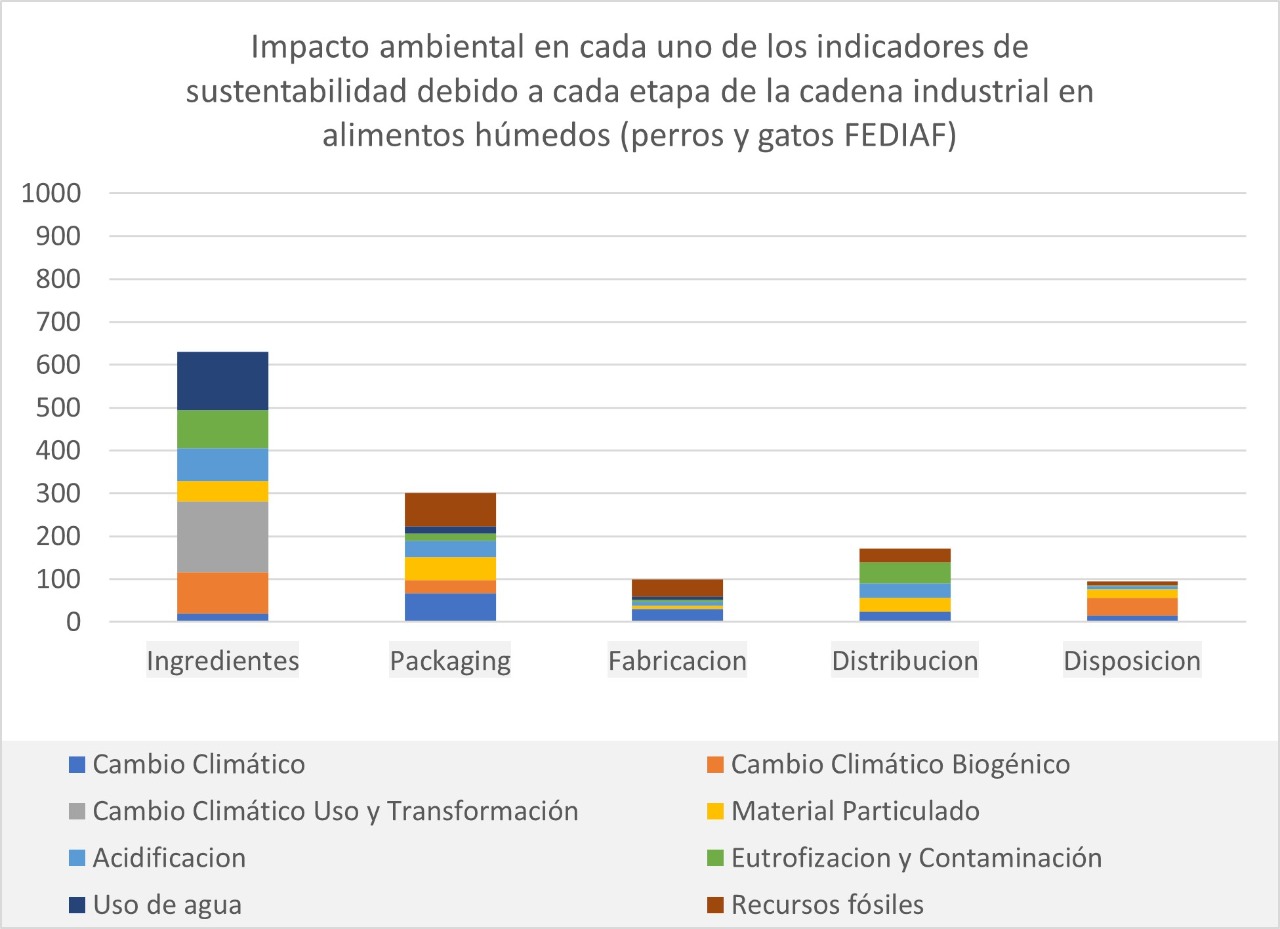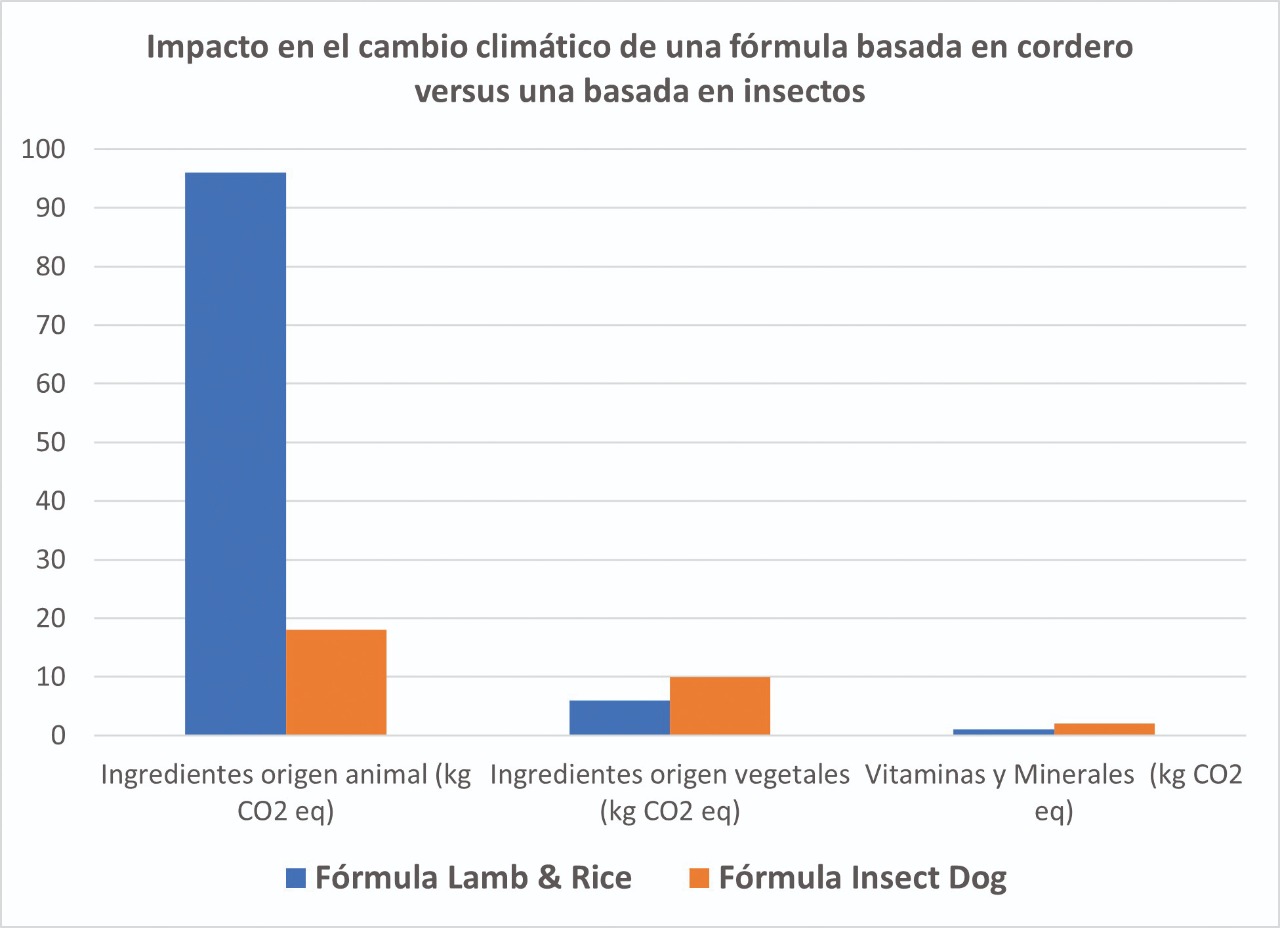Each one with different degrees of practical execution, but all promoting changes and questioning the current paradigms of production, distribution and consumption of the goods that society requires to run properly.
The pet industry can´t break free from this reality and innovations are being incorporated aimed at increasing sustainability and reducing the environmental impact of responsible pet ownership.
The deployment of these changes are taking place simultaneously at various organizational levels. Starting with the most formal level, all the national ones have approved laws to control industrial activity to minimize its environmental impact, in our country there is a national framework and provincial regulations, all these laws are mostly based on the sustainability objectives of the United Nations, and are the guiding framework for the other organizational levels.
Then we have several examples of second-degree institutions such as business chambers or federations, non-governmental organizations such as ISO or foundations dedicated to sustainability and certification bodies. At a more basic level are companies of various sizes, among which transnationals are clearly ahead.
It is worth to set apart between companies that produce general goods or services and the emergence of new companies that provide goods or services specifically related to sustainability, such as The Ocean Clean Up, a company whose objective is to remove floating plastic from rivers and oceans around the balloon. Finally, and not least, it is the decentralized organization of citizen-consumers, who have also incorporated new behaviors and fundamentally consistently demand greater environmental care from companies and governments.

Figure 1: cascade of relationships between the different international commitments, national legislation, business strategies and demands / new behaviors of citizens around the new vision on business sustainability.
Now, what are the specific guidelines and concepts that apply to the pet industry and its social relationships
At the legal level, all companies in Argentina must comply with the regulations derived from Law 25675 (2002) National Environmental Policy, on the other hand, there is already specific legislation on climate change Law 27520 (2019) Adaptation and Mitigation to Climate Change . Each province and municipalities also got some specific regulations that are those of effective compliance for the operation of production units. The management of gaseous emissions, liquid effluents, industrial and hazardous solid waste, are some of the key aspects for obtaining the Environmental License, a document that indicates compliance with the legislation.
In the business field, additional certifications have emerged that seek, in addition to complementing, to some extent exceed current regulations to achieve an organization oriented towards sustainability in all its operations and business strategies. The most important are the ISO 14001 Environmental Management System standards and the certification as Company B, which implies changes in the same structure of the corporate contract to include caring for the environment as a business objective at the same level of importance as the profit itself.
Of all concepts that have emerged from this new way of thinking about our activities, perhaps the most important on a practical level are the Environmental Impact Analysis and the Life Cycle Assessment. The first focuses on determining the individual incidence of an operation or ingredient with respect to standardized environmental indicators such as the emission of greenhouse gases or the contamination of bodies of water. The second monitors the entire life cycle of a manufactured product, from the purchase of its ingredients to its final disposal as waste. Both concepts help to make practical decisions and carry out objective evaluations of our industrial activities to constantly and significantly reduce the negative environmental impact, but also to increase the positive one.
Let's check the sources of information on environmental impact of the pet food industry. The most important study carried out to date was by FEDIAF (European Pet Food Industry Federation). The study did a thorough analysis on the value chain of our industry with the concept of 'cradle to grave' (from the cradle to the grave, literally or the entire life cycle as it is usually used in Spanish).
The first important point to highlight are the standardized impact factors assessed:
- Climate Change - Biogenic Climate Change - Climate Change, Use and Transformation
- Particulate Material - Acidification - Eutrophication and Pollution
- Water use - Land use - Fossil resources
On the other hand, the value chain was divided into four areas:
- Ingredients
- Manufacturing
- Packaging
- Use and Final Disposal (landfill, recycling, reuse)
Finally, it should be mentioned the dry and wet products for cats and dogs were all analyzed separately. Since the results of each impact factor are expressed in very different units, a qualitative comparison of each area is presented as a percentage.

Figure 2: Comparative graphic analysis of the study on the environmental impact factors carried out by FEDIAF for the pet industry in Europe. Percentage environmental impact of each of the four areas of the value chain in the four types of food, in which the category was divided to conduct the study.
The result of the analysis makes it possible to clearly differentiate between wet and dry food. Thus, for example, pet foods got a greater environmental impact due to the ingredients that compose them, and in wet foods the impact of the packaging increases in percentage, mainly due to the fact they are packaged in smaller containers.
Another interesting fact that emerges from the study is the four areas of the industrial chain, the ingredients are the ones that have the greatest combined impact, and in particular they contribute to Climate change and the Eutrophication of waterways.

Figure 3: Dry pet food. Quantification of the impact of each area of the value chain on the different environmental factors studied. As can be seen, the ingredients have the greatest environmental impact in this type of product.

Figure 4: Wet pet food. Quantification of the impact of each area of the value chain on the different environmental factors studied. As can be seen, the ingredients and packaging have the greatest environmental impact in this type of product.
These important conclusions emerge from FEDIAF's analysis:
- Ingredients have the greatest impact in the environmental of our industry, the generation of those ingredients in reality, and especially those of animal origin. For example, beef has an environmental impact on the climate change factor - greenhouse gas emissions that is 10 times higher than that of soybean oil, to take just two examples. (See figure 5). In dry foods, the contribution of ingredients to environmental impact is significantly higher than in wet foods.

Figure 5: Greenhouse gas emissions with impact on climate change in the production of various foods. Source Our Wolrd in Data, official database of the University of Oxford used by the UN to monitor the progress of the 2030 sustainable development goals.
- Packaging has the second highest weight in pet food manufacturing considered only the materials. In the case of packaging, its impact is due to the consumption of fossil resources and contribution to climate change, but also to the emission of particulate material. The contribution of packaging is significantly higher in the case of wet pet foods, since they use smaller containers and the proportion of packaging in the product is higher.
- Distribution is in third place as the area with greater impact on the environment, mainly due to the consumption of fossil resources, the contribution to climate change and the pollution of water courses. Being its relative impact a little higher in wet pet food than in dry pet food.
From the conclusions of the FEDIAF study it is evident that any serious initiative to reduce the impact of our industry on the environment must include ingredients and packaging, analyze two practical cases to exemplify the use of the concepts defined so far in the real world,
Changes in the packaging, and please don´t confuse recyclable with low environmental impact. In 2019, North American pet food company Earth Animal considered a packaging change for its dog food Wisdom®
I wanted to understand the total environmental impact of three different flexible packaging options:
- Biological base (your existing packaging)
- Traditional multi-layer petroleum-based plastic
- Monomaterial ready to recycle
Through the services of the non-governmental association Pet Sustainability Coalition[1],the main benchmark in sustainability for the pet industry in the US, a comprehensive Life Cycle Assessment was carried out in order to compare the options.
The main summary is without a correct life cycle assessment an incorrect decision would have been made. Figure 6 shows a summary of the results of the life cycle assessment that was used to make the final decision.

Figure 6: Earth Animal compared the impact of fossil fuel use, greenhouse gases, and water consumption throughout the life cycle of three different packaging options. Results for every 11500 bags of 500g capacity.
As can be seen in the graphical analysis, although the bio-plastic that the company currently uses consumes a little more water during its production, it consumes fewer fossil resources in its preparation and emits less greenhouse gases. With which it is clear that bio plastic continues to be the best option globally analyzed. An important point to consider is that, through a complete life cycle assessment, it becomes clear that a recyclable material is not always the best option to make a change.
Reducing the impact of ingredients in the pet food industry.
Another case analysis carried out by the Pet Sustainability Coalition for Josera, a US pet food company, was carried out to compare the impact of two different ingredients in a hypoallergenic formulation, taking into account not only the impact of the ingredient itself, but also the of its production and transport.

Figure 7: Comparison of the impact on greenhouse gas emissions with a negative impact on climate change for two formulations of a hypoallergenic product from the North American company Josera. The environmental impact was calculated taking into account all stages of the life cycle of each ingredient, from its production on the farm to its transport to the pet food factory. Data from the Pet Sustainability Coalition.
The conclusion of the study carried out by the Pet Sustainability Coalition for Josera is that the formulation of a food to reduce skin allergy problems based on insect proteins is 82% less environmentally expensive for the planet than a product based on lamb proteins. While the relative impact of the plant and mineral ingredients that make up the insect meal formulation is higher, the environmental footprint of insect protein is only 18% that of lamb. Therefore, the total environmental impact of the insect-based product is a lot lower.
It should be noted that insect proteins and plant proteins have a significantly lower environmental impact than proteins of animal origin, especially those of beef. That´s why a real way to reduce the environmental impact of our industry, especially the emission of greenhouse gases, is to replace animal protein sources with vegetables and insects, which emit less greenhouse gases, use less surface area. soil and less pollute waterways.
Finally, we will briefly analyze a recent article that allows us to put the impact of the pet food industry in context. The study is only for dry foods so the total values of the industry added to wet foods are higher.
Emissions: 56 - 151 Mt CO2 eq, which is comparable to 1.1% - 2.9% of total agriculture. Emissions from the pet industry would rank it as the 60th country (Philippines)
Land use: 41 - 58 Mha land use, equivalent to 0.8 - 1.2% of total agriculture. Impacts comparable to an area twice the size of the UK.
Water use: 5 - 11 km3 water, 0.2 - 0.4% of total agriculture.
Although it is not one of the industries that has the greatest impact on the environment, our activity is not negligible at all. That is why our responsibility as professionals in the sector is to seriously evaluate the alternatives to minimize our environmental footprint.
Source: WMG
You could be interested: Greenwashing in pet food: what it is and how to avoid it





































